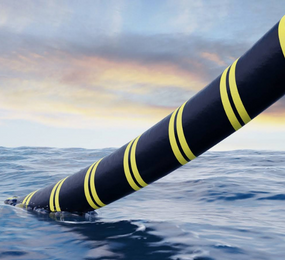Why Submarine Cables?
The development of offshore wind farms and oil and gas offshore platforms requires the installation of power, control and monitoring and communications cables between the platforms and the mainland. For this purpose submarine cables are installed, which are also used for power and/or communications between islands and the mainland, between countries and even between continents.
Historically, submarine power cables linked shore-based power grids across bays, estuaries, rivers, straits, etc. Today, submarine cables carry power between countries and to offshore installations, e.g. oil/gas platforms and ocean science observatories. The cables also transfer power from offshore renewable energy schemes to shore, e.g. wind, wave and tidal systems
Here’s a visual representation of its rise in usage across the world:
https://www.youtube.com/watch?v=6dkiqJ_IZGw
Characteristic of Submarine Cables
Submarine cables, that must comply with IEC Standard 60288[1], are specifically designed and manufactured to be installed underwater, laid at seabed, taking into account that seabed is rugged and rocky, that there are marine animals, which can damage the cables, and that is mandatory that cables must withstand tsunamis and volcanic activity, as well as trawls used by fishermen, that are more hazardous than the fish itself.
To establish the characteristics of a submarine cable is necessary to consider the following parameters:
- Ambient temperature (seabed and land).
- Burial depth.
- Particular burial/protection requirement at shore approach (deeper burial, directional drill pipe).
- Axial spacing of cables.
- Thermal resistivity of seabed and land.
- Length of submarine cable.
- Water depths.
- Characteristics of Power Submarine Cables
The main characteristics of power submarine cables are:
- Conductors: Copper or aluminum. In case that the conductors are going to be used in long depths and if requested the conductor is sealed with special material which prevents the water penetration in case of cable damage.
- Insulation: XLPE, EPR or MIND (mass impregnated paper).
- Screening: Copper wires or tapes and lead sheath where required.
- Armoring: The protection of the cable from mechanical stresses is achieved by the armoring consisted of steel wires (for single core cables armoring must be of non-magnetic material – usually aluminum – to avoid overheating of armoring due to Foucault currents[2] – Joule effect), which provide also to the cables the required mechanical strength which during laying or pulling. The steel wires are of different categories of breaking load and they are heavily galvanized.
- Outer protection: The outer protection of the cable, according to the conditions and requirements of the installation, is achieved by PVC or PE sheath and layers of polypropylene yarns or jute.
Join us at the 2nd Annual Submarine Power Cable and Interconnection Forum, where more than 70 senior practitioners and industry experts from across the sector will help identify and understand Submarine Installation processes and systems, Submarine Cable Failure reduction techniques, and smart solutions to subsea power cable needs.
















